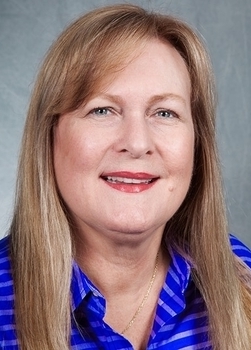One interesting aspect of our trial consulting work is that we often work for people whom we do not meet in person until we all show up at a mock jury project or Melissa arrives at the courthouse. We have considerable contact with clients via phone calls and email, but often, there is little face to face contact until one of these events. Because of this, we have to find ways to get to know the clients quickly absent interpersonal interactions. When we first started Magnus in 1993, we relied on books. The Florida Bar attorney directory was an annual publication and was the (only) way really, to get basic contact information on our attorney clients. We also paid lots of money for Martindale-Hubbell directories (listings of attorneys with their credentials) – again a big book! As the internet has evolved, these sources moved to online sites and at least in the case of the Florida Bar publication, ceased to be printed. The next change in information source has been the development and expansion of law firm websites. Fortunately in today’s internet world, we have several ways to find out about clients. And, we make a practice to do our homework and to get to know, virtually anyway, our clients before we meet them in person. Why? Because working as closely as we do with our clients it is helpful to know things about them like where they are from, what schools they attended, as well as many details about their experiences – it helps us related to them quickly, to “ramp up” and get to a comfort zone as soon as possible for us, and them. With work like this, there is no chance to get acquainted as in most workplaces where one interacts with the same basic group of people everyday. Consciously making the effort to compensate for this problem is important to helping our clients help their clients.
As a social psychologist, I am what many people describe “a people person.” I like human beings, in general, and I enjoy getting to know people, including learning what makes them who they are. My job, as a litigation consultant, requires me to interact with a variety of attorneys, insurance adjusters, corporate executives, and other high level individuals in both professional and personal ways. In fact, the world of litigation, trial, and jury consulting is largely a relationship business, in that many clients choose to retain one consultant over others because he or she likes the consultant. The more I can get to know a client, quickly, the better the chances I have of working with this person in the future. Obtaining information about where the client attended college and law school is an important first step in getting acquainted. In addition, asking a few questions upon first meeting a client is a good way to look for commonalities. A simple question, such as, “where did you grow up?” often leads to a good discussion with a client I have never met. My company recently worked with an insurance adjuster from another part of the U.S. who required my partner and me to fly a considerable distance (and at our expense) to meet in person. This client expressed an unwillingness to hire anyone sight unseen. Upon getting to know this person after working on several cases, my partner and I discovered several commonalities that made our relationship more comfortable. These commonalities were revealed only by my partner’s and my genuine interest in our client as a person, as opposed to someone who is the source of a considerable amount of work (and revenue!) for our company. There are numerous sources available for finding out about someone’s background. Being uninformed and uninterested in one’s clients is just not an option for my partner and me.



Comments are closed.